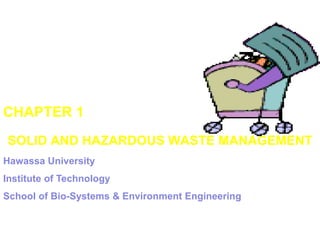The document discusses solid and hazardous waste management, outlining 8 chapters that cover topics like solid waste generation and collection, handling and processing, transportation and disposal. It also examines factors contributing to solid waste problems and provides definitions and sources of different types of solid wastes. The goal of integrated solid waste management is to manage waste in a way that protects public health and the environment.



















































